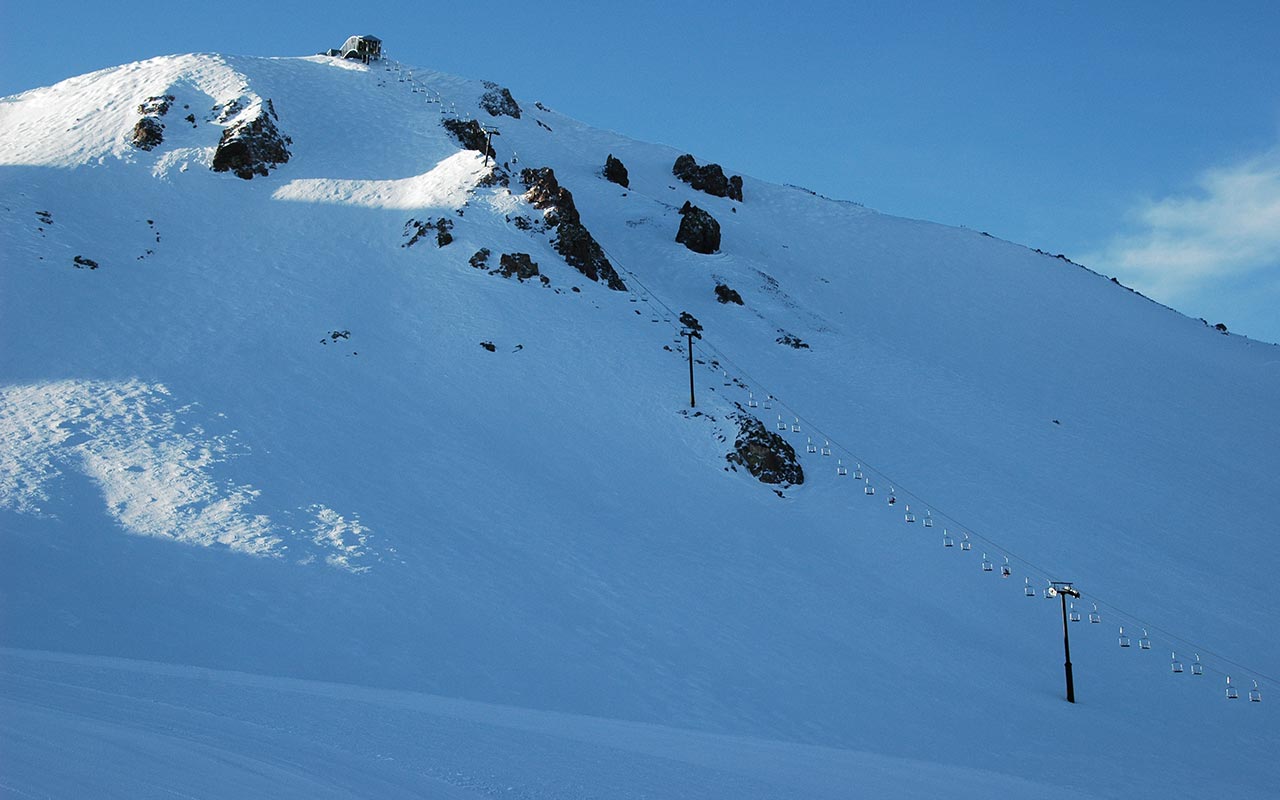The Vertigo Machine

It is unlike any other chairlift I know of, and it scares the hell out of me every time I ride it. I'm talking of course about Mammoth Mountain's wonderful Chair 23, that aging triple that gains elevation as quickly as any modern quad thanks to its brain-defying steepness. As the season progresses my own brain seems to adapt, a bit, to the optics of Chair 23.
That first ride is a white-knuckler, me holding on tight, wrapping my arm through the bars of the backrest to belay myself, stomach churning and head buzzing. Later in the year, I might switch to a lighter grip, and the dizziness receeds—at least until I disembark, exit left, and peer over the edge at the entrance to Dropout.
Really? I often find myself thinking, as I ponder that sublimely-menacing view. Often the urge to back up is overpowering, especially when Dropout's headwall is icy, supercharging the intimidation level and basically rendering the whole pitch unskiable. I think I'll just meander over to Cornice Bowl, thank you very much. We'll try again later.
I've pondered exactly why Chair 23 is such a potent vertigo machine. First, of course, it really is steep. That pair of Dropout and Wipeout chutes constitutes legitimate double-black terrain, often consequential, the kind you don't usually find right off the top of a lower-48 resort chairlift. So: steep! But there's also something else going on...
With its complete lack of trees, this steep landscape confuses our sense of up and down. The ride starts high, over a small valley, needling our natural fear of heights, and then gradually steepens, in the process tricking our brains into thinking we're seeing flat rather than angled ground. This masterstroke of misdirection is enhanced by chairlift towers that are themselves angled, rather than plum vertical.
Result: it feels as if your chair is angled down, and dramatically so, such that you constantly feel you're about to plummet forward into space. Our brains struggle to reconcile these conflicting messages, which only intensify when you finally get off Chair 23, and discover that the horizon has once again tilted, making everything feel not just steep but savagely so.
The payoff, of course, comes in challenging your mortal terror and dropping in to 23's terrain. Often while the rest of the mountain is wind-scoured, you'll find hidden pillows of spindrift extending in columns alongside those jaggedy rock spines. You can often ski these little pipelines of joy nearly all the way down.
On powder days there is of course the Le Mans Start when the chair opens and the rope drops, and everything is blanketed in fresh and deep snow. But for me the pinnacle of pleasure comes not when the mountain is crowded, but rather later in the year, when the sun bakes everything into mushy perfection.
Then, Chair 23's steeps seem to mellow—just a tad—and you can gravity-dance your way amongst the terrain's various chutes, spines, and double fall lines to your heart's content. The only problem you'll face on those heavenly days is which run to ski next. They're all so good there's practically no way to choose 'em...
— May 30, 2014
Andy Lewicky is the author and creator of SierraDescents
brad brown May 30, 2014 at 4:47 pm
Dead on. The last drop into Drop Out still regularly plays in my mental DVR. Exactly like you said, freak out entry, chalking north face weeks after a storm "pow". Like watching a train wreck, you shouldn't but you HAVE TO. Let the hiking begin!
Dan Conger May 31, 2014 at 1:53 am
My favorite run off of 23 is down on Paranoid Flats. Talk about steep. On a mid-week powder day when no one is there, though, there is nothing quite like charging into Drop Out and tearing is apart with people cheering from the lift. In a good season, Drop Out 2 is very steep and narrow, but it is too choked with rocks if there is a lack of snow.
I miss Mammoth ... loved growing up in Bishop and being only 45 minutes from Main.